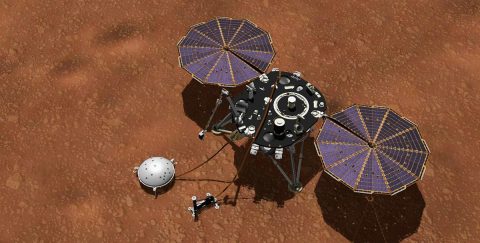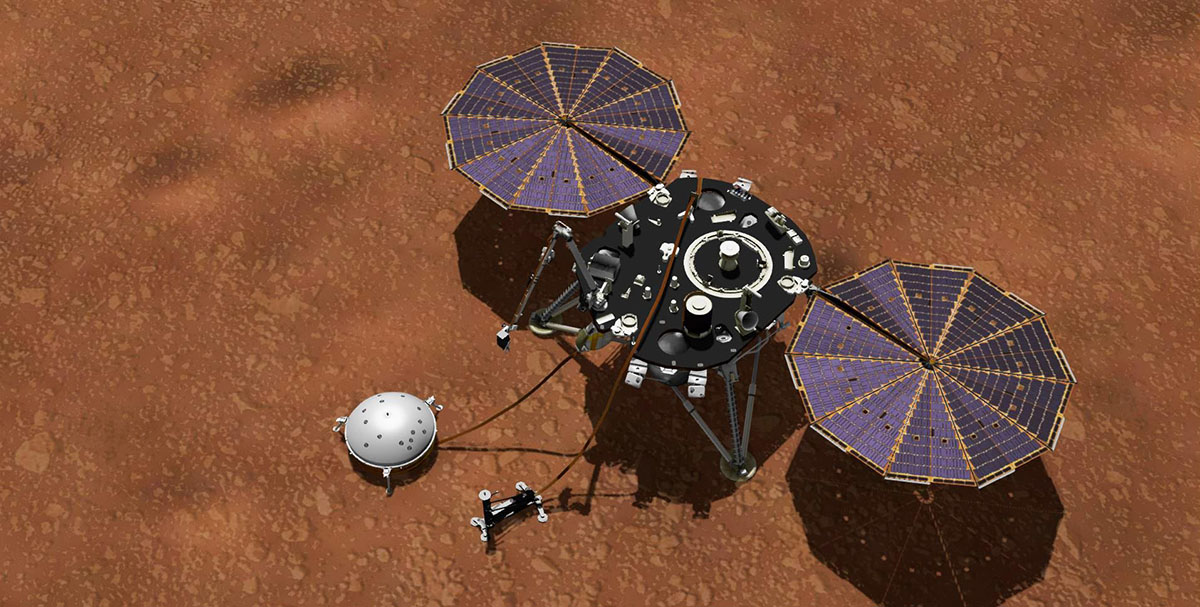 Pasadena, CA – Weather sensors aboard NASA’s InSight Mars lander stopped providing data on Sunday, August 16th, 2020, a result of an issue affecting the sensor suite’s electronics. Engineers at NASA’s Jet Propulsion Laboratory in Southern California are working to understand the cause of the issue.
Pasadena, CA – Weather sensors aboard NASA’s InSight Mars lander stopped providing data on Sunday, August 16th, 2020, a result of an issue affecting the sensor suite’s electronics. Engineers at NASA’s Jet Propulsion Laboratory in Southern California are working to understand the cause of the issue.
Called the Auxiliary Payload Sensor Suite (APSS), the sensors collect data on wind speed and direction, air temperature and pressure, and magnetic fields.

Throughout each Martian day, or sol, InSight’s main computer retrieves data stored in APSS’ control computer for later transmission to orbiting spacecraft, which relay the data to Earth.
APSS is in safe mode and unlikely to be reset before the end of the month while mission team members work toward a diagnosis.
JPL engineers are optimistic that resetting the control computer may address the issue but need to investigate the situation further before returning the sensors to normal.
More About InSight
JPL manages InSight for NASA’s Science Mission Directorate. InSight is part of NASA’s Discovery Program, managed by the agency’s Marshall Space Flight Center in Huntsville, Alabama. Lockheed Martin Space in Denver built the InSight spacecraft, including its cruise stage and lander, and supports spacecraft operations for the mission.
A number of European partners, including France’s Centre National d’Études Spatiales (CNES) and the German Aerospace Center (DLR), are supporting the InSight mission.
CNES provided the Seismic Experiment for Interior Structure (SEIS) instrument to NASA, with the principal investigator at IPGP (Institut de Physique du Globe de Paris). Significant contributions for SEIS came from IPGP; the Max Planck Institute for Solar System Research (MPS) in Germany; the Swiss Federal Institute of Technology (ETH Zurich) in Switzerland; Imperial College London and Oxford University in the United Kingdom; and JPL.
DLR provided the Heat Flow and Physical Properties Package (HP3) instrument, with significant contributions from the Space Research Center (CBK) of the Polish Academy of Sciences and Astronika in Poland. Spain’s Centro de Astrobiología (CAB) supplied the temperature and wind sensors.



